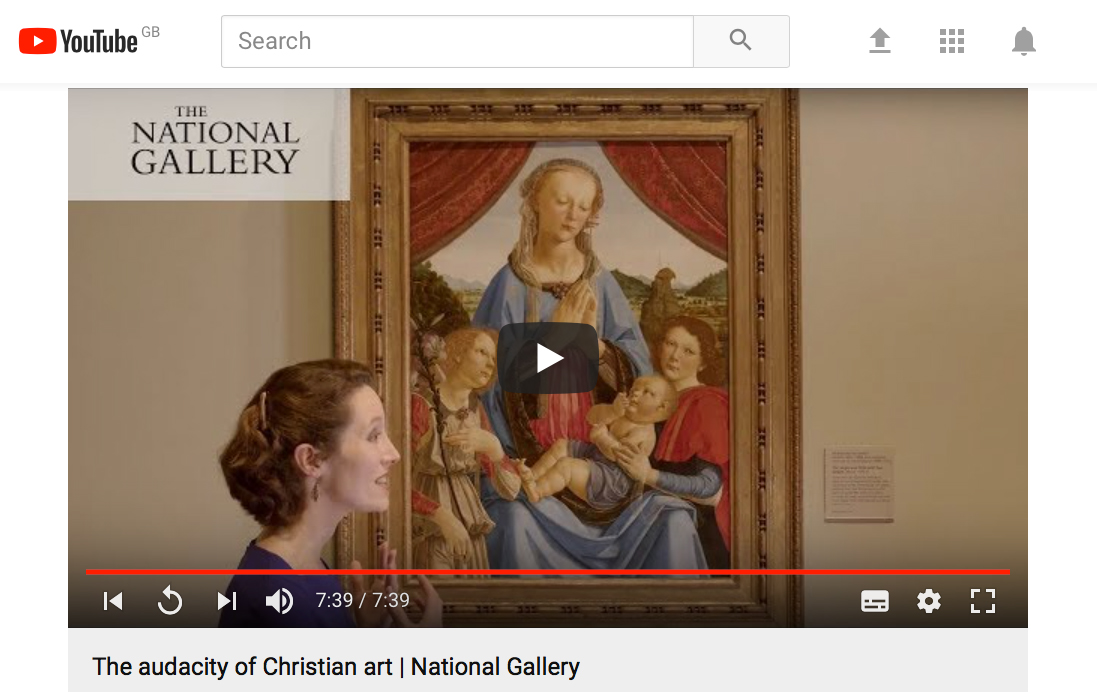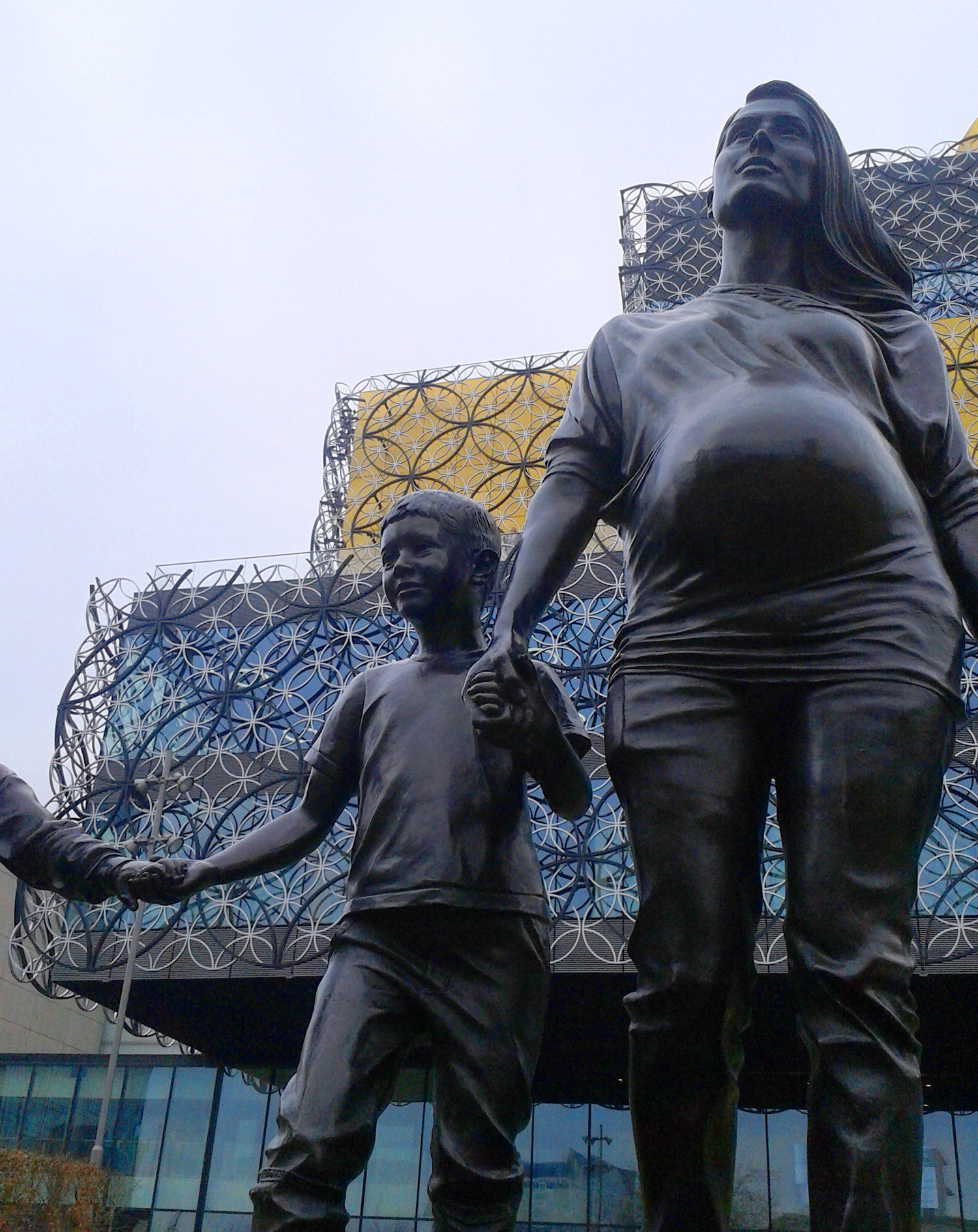Along with the last two blog posts, I’ve found myself following a focus on digital technologies for engaging with art: Mat Collishaw’s Thresholds at Lacock Abbey, the Alight app for Chichester and its Cathedral, and today the seven-part YouTube series The Audacity of Christian Art by Dr. Chloë Reddaway for the National Gallery, London. The National Gallery’s landmark exhibition Seeing Salvation in 2000 was also accompanied by a screening, on that occasion with the then director Neil MacGregor presenting four episodes for the BBC. Both then and now, with YouTube’s more bite-sized packaging of reflections on art with biblical subject-matter, the National Gallery have gently prompted the theological discourse behind so much of their collection to emerge centre-stage. More precisely, one third of the artworks in the collection have this Christian ‘agenda’, and it is indeed a mark of renewed interpretative urgency that Reddaway’s position as the Howard and Roberta Ahmanson Curator in Art and Religion assumes this online platform for its extended discussion.
But there are characteristics of this twenty-first century ‘screening of salvation’ that would benefit from more critical understandings. Visual culture’s tendencies of highly packaged information for quick and immediate consumption tends to erode the possibilities for the ‘slow burn’ effect of images viewed over long periods of time, in person. Photographic technology in the films that cuts between head shots of Reddaway, and manifold variation of zoomed, zooming, cropped, angled, wide-angled, out-of-focus and distanced framings of the images employs a language of hybridity and mobility – the better to engage our interest in a two-dimensional object, but which also effects a kind of perceptual distraction and distance. Also, from an art historical perspective, The National Gallery trades on its formal framework of institutional repository for Art. Its remit for engagement is constituted by the rational and cognitive discourses of intellectual enquiry, in which unfortunately the relation of image to theology is treated more-often-than-not as thematically reducible, immersively sterile, and quaintly historical. Despite Reddaway’s best efforts (and elsewhere, she has written on the importance of precisely countering such art historical treatment with a revitalising of contemporary theological situation), her iconographic focus puts biblical meaning in the past, and theology becomes a relic, because that’s where its recovery is concentrated. At times, it is occasionally enlivened with delightful intrigue and questions which resonate with our looking today – of snails on the edge of a painting and shadows on the sky behind a bower of fruit (The Virgin and Child with Saints Francis and Sebastian, 1491, from Episode 3; and The Vision of the Blessed Gabriele, c.1489, from Episode 7; both paintings by Carlo Crivelli) – but the dialogue of hermeneutical exchange nevertheless retains its overall ‘pastness’.
Now here’s the thing: these visual culture / art history platforms aren’t necessarily negative for theology and the arts, but it depends where you put the theology. It would be ungenerous of me to suggest that the National Gallery is operating to consciously exclude contemporary theological horizon by a focus on its symbolic construction in the past. Neil MacGregor continues to broadcast about religious culture precisely to enliven our sense of the enduring and ‘relevant’ human quest for meaning (in his BBC Radio 4 series recently on the British Museum’s Living with Gods exhibition). And it would also be a red herring to critique contemporary technological engagement for its erosion of certain contemplative practices and contexts for theology in such art, however much such engagement has and is undoubtedly changing the field. Let’s say, for the moment, that theology might be better situated in the socially-minded, relational and hermeneutical spaces of viewer interaction and interpretation today. Instead of its recovery, let’s talk about about its return. With those across visual culture studies and art history now discussing it in such terms, I find theology now to be an increasingly ‘live’ issue. In post-9/11 culture, it may well be fragmented, international, diffused, but it is no less potent in its migrating forms – when Bibles and pilgrimages are apps, when Stations of the Cross are city-wide and trans-religious, when churches are art galleries, when vicars are cultural commentators, and above all, when art practitioners are referencing religion, we need theology’s resurrected vocabulary to percolate image criticism with the decentered, deconstructed sympathies it already has. More on that, another time…
Header image: the National Gallery’s YouTube series, ‘The Audacity of Christian Art’ with Chloë Reddaway, 2018.



